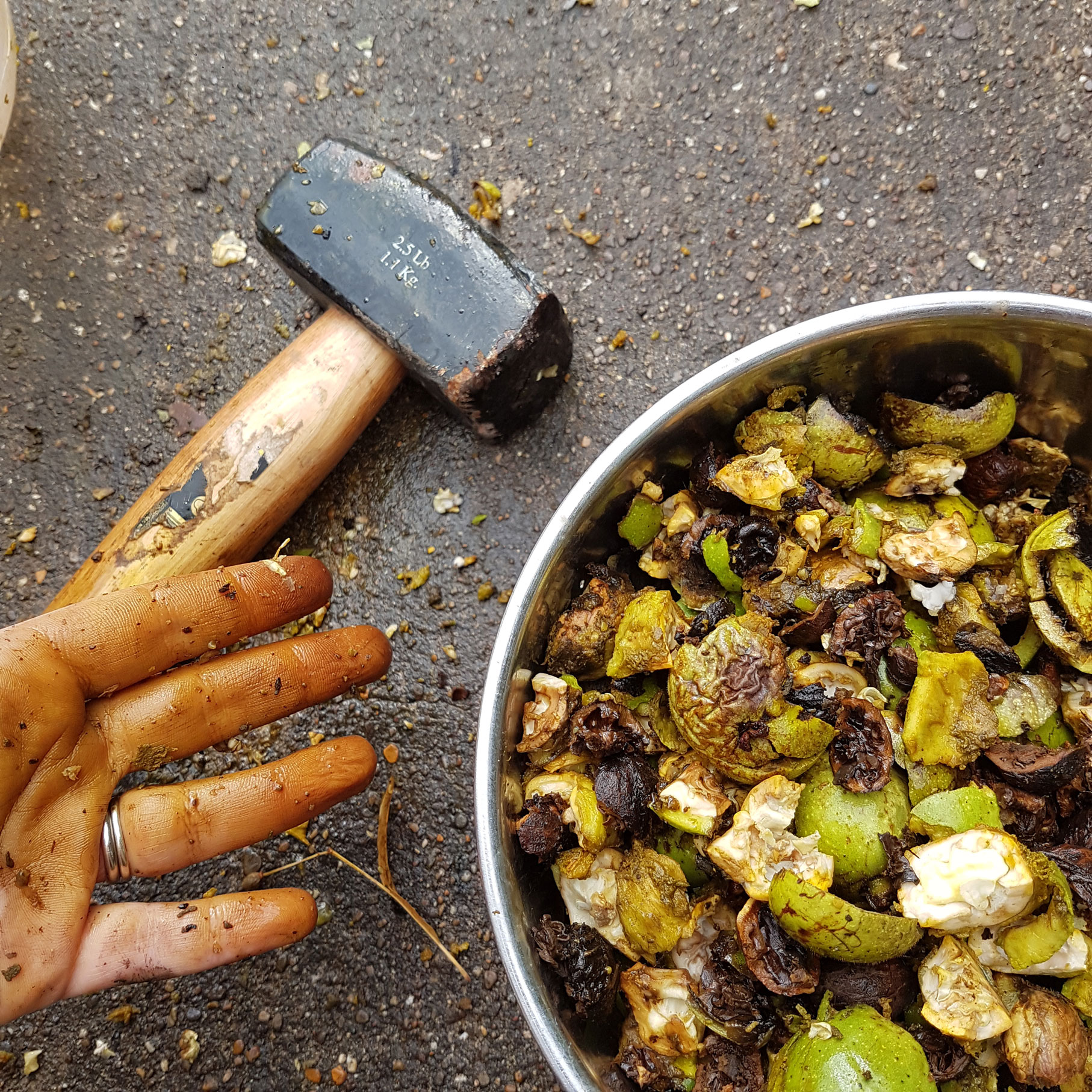Natural Dyeing with Fresh Walnuts
There's a walnut tree on campus that was pointed out to me the other day. Walnuts make a really good colourfast brown shade - I have used dried hulls before but it would be great to use fresh ones! As luck would have it, the weather was really bad over the weekend, so when I went into uni on Monday there were plenty of windfallen walnuts on the ground ready for picking.
Jenny Dean has written a great blog on dyeing with fresh walnuts which I used as a guide. I was aiming to achieve a really deep brown, as I have a particular project in mind for this colour. and have a specific piece in mind for the yarn that is this colour.
I took the walnuts home and proceeded to break up the hulls, which was tougher than expected! I resorted to a mallet on the concrete path - as you can see my hands got pretty stained. One day I will learn to wear gloves, but at least this confirmed the high tannin content of the fruit.
I had nearly double the weight of material to the weight of yarn I wanted to dye, and decided to use it all for this project as you can re-use the dye bath and the walnuts. I poured boiling water over the smashed hulls and left it for 24 hours. I then strained twice - first with a sieve then through a muslin so there wouldn't be any bits in the dye bath.
I then added 400g of scoured yarn. There was no need for a mordant due to the rich tannin content of the walnuts. The yarn is a shrink resist Shetland wool developed by my friend, I've used it before with dried walnuts with good results and it's a lovely Aran weight for hand knitting or knitting on a chunky machine. I heated the pot to a simmer then held at 80 degrees for an hour before leaving to cool overnight.
The next day I took the yarn out of the dye bath, and while it made a lovely consistent shade of brown (image below left), wasn't quite the shade I wanted. I decided to add a small amount of iron (a teaspoon of ferrous sulphate) to the dye bath, stir thoroughly, then re-add the yarn and heat for 5 minutes. Iron is very quick to modify the colours, and as it can damage wool, I only exposed the yarn for a short period of time.
The result from the iron modifier was great, just the shade of deep brown I really wanted (image below right)! I have saved the walnuts and dye bath for later use. I have read that fermenting the walnuts improves the colour, and according to Jenny Dean: 'Don’t worry if mould forms as time passes – this will only improve the dye.'
The plan for this yarn is to knit a large wrap/shawl type thing with a contrasting brightly coloured yarn, using a stitch pattern that hides or shows the contrasting yarn depending on how the fabric is stretched.
( And by the way, 4 days later, my hands are still brown!)
Burns, R. 2018. Fresh Walnuts 7. Photograph.
References:
Burns, R. 2018. Fresh Walnuts 1-7. Photographs.
Dean. J. 2010. Fresh Walnut Hulls. [online] Available from: http://www.jennydean.co.uk/fresh-walnut-hulls/ [Accessed 30 July 2018].
If you’ve enjoyed reading this blog and found it helpful, why not buy me a virtual coffee on Ko-Fi? There’s no obligation, but your support will help me continue to write these blogs and help my journey to become a self sufficient natural dye grower and knitwear designer. Ria :)







